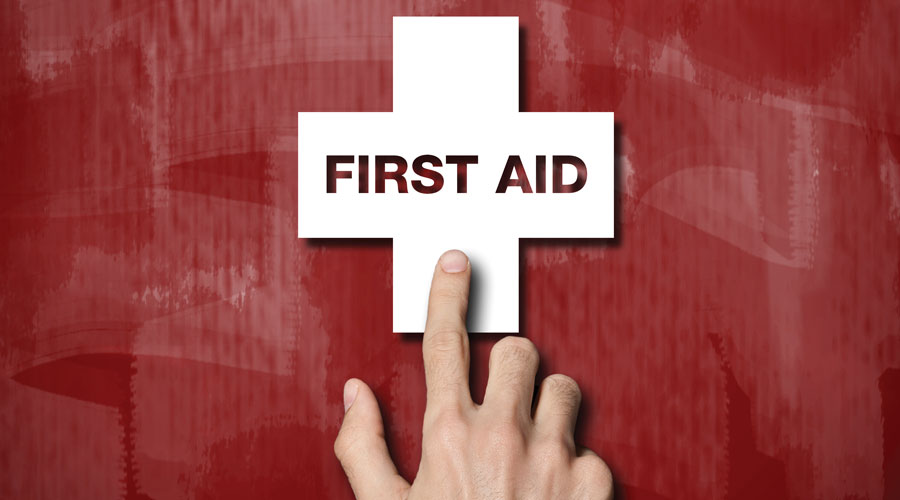From simply healing scraped knees to finding specialty bandages for post-surgery, patients are likely looking to your pharmacy for the wound care and first-aid products they need.
Expanding beyond the essentials to make your wound care section a niche is an opportunity to help your patients—and grow your business.
But it takes work.
“If you have a niche and it’s easy, it’s not going to be a niche much longer,” said Gabe Trahan, senior director of store operations and marketing at the National Community Pharmacists Association (NCPA). “Wound supply is a commitment. If it was such a great, easy thing to do everybody would have it.”
But, Trahan said, adopting this niche in your pharmacy can be well worth it.
Business benefits
Wound care and first aid is unique among front-end categories because patients usually purchase the products as a result of an acute need, and they’re not price-sensitive.
Products in this category are seldom featured in advertisements or sales circulars, and the need for them is reoccurring, so pharmacies can rely on this category for consistent, large profit margins.
“First aid and wound care can offer a profit margin of over 40 percent,” Trahan said.
Set your business apart
If you’re going to offer a wound care section, Trahan recommends making the most of it and offering specialty wound care products that aren’t available in the dollar store down the street. That means going beyond traditional first-aid tapes, gauze dressings and bandages.
Consider stocking scar treatment products, anti-parasitic products, skin protectants, anti-itch products, antibiotics, dressings for burns, wound drainage products, bed sore creams, diabetic ulcer healing cream and products for general wound healing.
And, highlight your section by keeping it top-notch.
Dusty, dirty and empty shelves look unsanitary, and unappealing. It’s also important to keep your section well stocked.
“When you’re out of a product, that’s just a big sign that says ‘Go somewhere else,’” Trahan said. “And when you carry only one of each item, you’re saying to the customer, ‘I’m not really too sure about this stuff.’”
Leverage your expertise
Patients looking for wound care and first aid items often have multiple questions and concerns.
“These inquires usually involve a one-on-one conversation with a pharmacist,” Trahan said. “That’s where the community pharmacist’s accessibility, compassion and knowledge shines.”
Devoting time to counsel patients about wound care and first-aid products can give your pharmacy a competitive edge.
“Being able to assist the patient in making the right choices in this department will provide you with an important advantage over the chains,” he said.
Promote the section
“‘Build it and they will come’ only works in the movies,” Trahan said, so a successful wound care section requires marketing. “The problem with community pharmacists is when they bring in something new, they don’t necessarily tell anybody,” he said.
Trahan suggests reaching out to local physicians, home health providers and athletic coaches to learn what products and brands their patients need. Also, refer to the local clinics and caregivers who initially treat patients’ injuries. “Finding out what types of products and brands caregivers prefer and suggest is a valuable step,” Trahan said.
Ultimately, Trahan said advising patients about wound care should bridge into your pharmacy’s other services and offerings.
“Assisting a patient with wound care questions should always end with the pharmacist asking this question: ‘Now, do you have any questions about medication that I can answer for you?’” Trahan said.
Section size
How much front-end space you devote to your wound care section depends on how invested you want to be in the category, and how much expertise you’re comfortable providing. Here’s a guide to determine how much space to devote to your section.
Beginner
Start with a section 4 feet long by 54 inches high.
Emerging expert
Grow into a freestanding gondola that’s 8 feet long and 54 inches high.
Specialist
Specializing requires a section that’s 8 to 16 feet long and 54 inches high.
Choosing products
How do you know what to put on your shelves?
Gabe Trahan, senior director of store operations and marketing at the National Community Pharmacist Association (NCPA), offers suggestions for your wound cast section.
General first aid
Start with medical tape, gauze, adhesive and liquid bandages, scar treatment, antiseptics and wound dressing material.
Physician-recommended products
“Ask what local physicians are recommending for wound care, and make every effort to carry those products,” Trahan said.
Brand name products
“Brand name items, are considered in some patients’ minds as ‘proven items,'” Trahan said, so carry brand name items instead of private label products.
Companion products
External and internal pain relief, waterproof cast covers, hot and cold treatments, braces, and shoes, socks and slippers for patients with diabetes are companion products for many first-aid and wound care essentials.
A Member-Owned Company Serving Independent Pharmacies
PBA Health is dedicated to helping independent pharmacies reach their full potential on the buy-side of their business. Founded and owned by pharmacists, PBA Health serves independent pharmacies with group purchasing services, wholesaler contract negotiations, proprietary purchasing tools, and more.
An HDA member, PBA Health operates its own NABP-accredited secondary wholesaler with more than 6,000 SKUs, including brands, generics, narcotics CII-CV, cold-storage products, and over-the-counter (OTC) products — offering the lowest prices in the secondary market.












